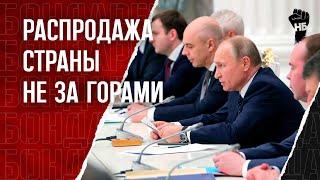
AWS SQS vs SNS vs EventBridge - When to Use What?
Комментарии:

Best lecture on SNS, SQS and EventBridge that I have listened to.
Ответить
thanks. very detailed explanation with usecases
Ответить
Amazing video! Packed with information and so clear!
Ответить
Actually 5 target limitation can easily be bypassed by creating multiple rules
Ответить
This video is very easy to follow and understand for someone who isn't knees deep in this stuff all the time but needs to get across it for work. Many thanks!
Ответить
Thanks. Content is really good!
Ответить
Amazing explanation man 🎉🎉🎉
Ответить
I successfully completed the SAA C03 on 12th March🎉🎉🎉
Ответить
Good job on describing SQS, SNS, and Event Bridge in a visualized format.
Ответить
Could you compare msk also?
Ответить
I know Nick already commented, but I just want to add that EventBridge rules really look like they should be 1-1 with their pattern, but in reality they should be 1-1 with consumers.
Just like each consumer of SNS can choose to subscribe to a topic, each consumer of EB can choose to "subscribe" to events by defining a rule to capture all the events they care about. If 20 services all care about the same kind of event, then you will have 20 rules with the same pattern. It might seem redundant, but if ones of them decides they care about other things, they own their rule and can update that pattern independent of the other 19. They can also own the other targets, for example they can send captured events to a CloudWatch log group or own their own DLQ for failed events. If it truly is a pattern that a lot of consumer are matching one or more "default" patterns, you can set SNS as the target to get the 3rd party input support you want with the mass fan-out of SNS.
The limitations of EB in terms of number of targets and number of rules push you in the direction of these patterns; if you're hitting the limits of the system, you may just be using it wrong!

Perfect
Ответить
Thank you so much for these incredible explanations.
Ответить
what a fantastic video!
Ответить
👍🏿
Ответить
Thanks!
Ответить
Great info! Question - for the SNS example (and SQS) the message data is shown as containing structured json data (customerId, etc.). Is this a common and valid usage? The reason I ask is the AWS docs don't include an example like that. Their examples show a single message field containing just a string. Would that structured data go in the "message" field of the SNS message?
Ответить
So nicely explained. Thanks
Ответить
Best tutorial
Ответить
what about AWS MQ?
Ответить
Why do we need an sns then, since we are again creating 3 queues?
Ответить
The best and simplest explanation. Thank you so much!
Ответить
THIS IS JUST INCREDIBLE. THANK YOU SO MUCH. <3 <3 <3
Ответить
Very helpful comparison, thanks so much!
Ответить
Hi. What is the TTL of the message in Message Bus. What happens if the target downstream App is down?
Ответить
Thank you very much for this. Awesome content!!
Ответить
But in case the subscriber is lambda, OrderServce -> SNS -> SQS -> AnalyticsService (Lambda) | For this we can directly subscribe the SNS to Lambda, as anyway it will process the SQS we need not have to pull messages and during deployment, I think CloudFormation stack take cares of it.
Correct me if my understanding is not correct

so funny how you say we need sns instead of sqs to fix the inconsistency problem. Dude, that will not solve the problem.
you can not guarantee consistency if you are working with any kind of queues: sns, sqs, kafka, redis....does not matter.
also why you do not mention "exactly once" problem which is the first and most important problem to deal when we work with queue.
sigh! so many misleading information in your videos.

thank you video? Do you have an Udemy course?
Ответить
this is real gem...nobody could explain better than this. please make a playlist on aws with concept plus hands on.pla. may god bless u with a lot of money and health
Ответить
Can you elaborate or give me the key term for what you meant when you don’t want other services to hit the database? Segregation of tier one services.
Ответить
🎉
Ответить
Thank you for the content =)
Ответить
What triggers the poll that is executed by the lambda to the SQS queue?
Ответить
As far as I see, a big benefit of event bridge is that it keeps messages available after they’ve been processed. Which sns does not.
Ответить
Question:
A Solutions Architect has noticed that several VPC security groups have been modified in the last week. In the future, when changes like this occur, it is ideal for system administrators to be notified in near-real time and investigate the change to ensure resource security is not compromised.
What is the best solution the Solutions Architect can implement in this case?
Options:
Create an event-based Lambda function that triggers an SNS notification when a security group change occurs.
Configure AWS Config rules for your VPC security groups.
Create a CloudTrail trail to send log data to Amazon S3 related to any VPC security group changes in any region.
Use Amazon EventBridge to track API calls related to VPC security group changes in all regions and target Amazon SNS topics.

One of the best explaination, I found
Ответить
This saved me a ton of time. Thanks so much, great work
Ответить
Roberts Hills
Ответить
Ezekiel Island
Ответить
Nigel Burgs
Ответить
Boehm Stream
Ответить
Perez Sharon Johnson Kenneth Williams Barbara
Ответить
10
Ответить
Amazing video. Such a complex topics explained with so much simplicity. Keep up the good work mate!
Ответить
Dude, this is awesome! Seriously, it's unbelievable. But hey, one thing—could you use a dark gray or black background? This white one's really harsh on the eyes. Lots of people watch videos at night after work, so it'd be much better.
Ответить
Very well explained using the same example of Order Service :)
Ответить
So SQS Queue, by default, is a stack 😂
Ответить
Thank you for using a real world example this was very simple to understand please keep making more videos
Ответить
Hey - EventBridge product manager here! A quick clarification: you're able to create multiple rules on EventBridge that each match against the same event. Each of those rules can also have 5 targets. The typical approach is to use a separate rule per consumer. So you might have 20 different services in your application that each need to receive the same event - each of those services can have a separate rule that each matches against that event. You're not charged any additional amount for rule matches, and there is a soft limit of 300 rules per event bus.
Ответить

























